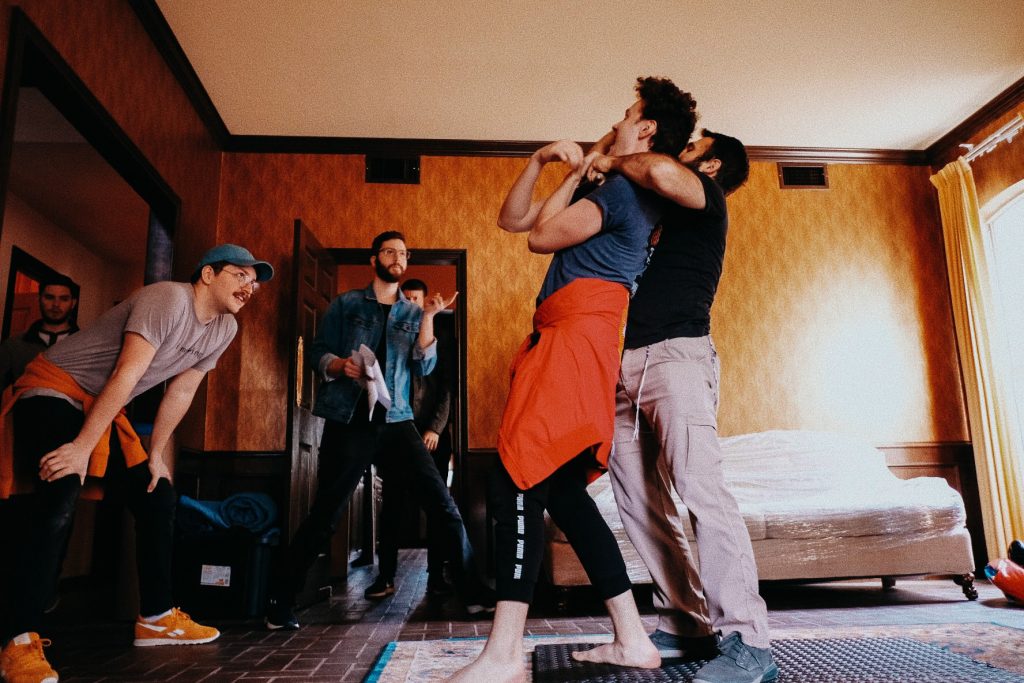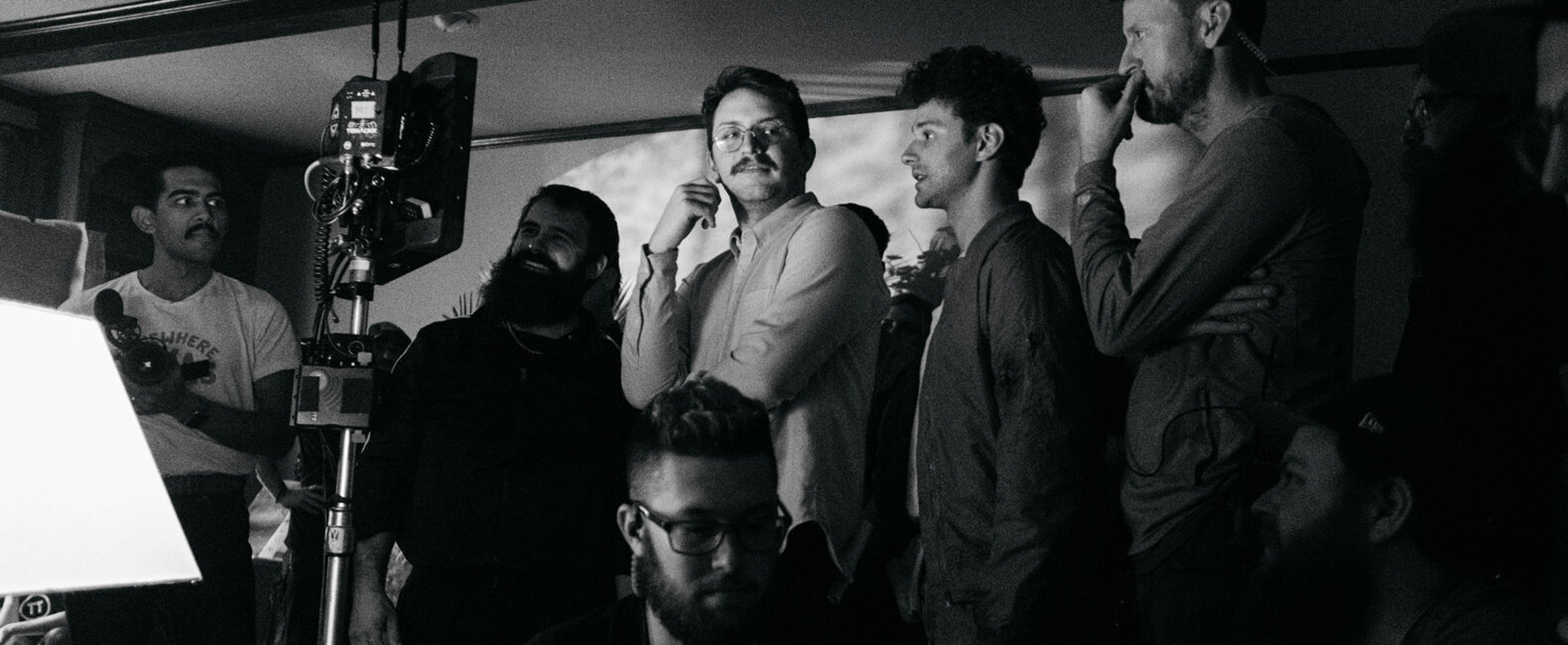Who hasn’t had to scale back an epic film project knowing there is no way to actually pay for it? Between quality actors, a camera crew, makeup artists, stunt doubles, and you name it, the cost of a film adds up fast.
But, thanks to great crowdfunding platforms, there’s no better time to pitch your film to potential patrons and help your film go the extra mile.
I sat down with Maker Table’s Co-Founder and Director Ryan Polly to pick his brain on their new action-comedy short Pizza Time, which they funded entirely using Kickstarter as a test run for future feature-length productions. With the different options of crowdfunding available, Ryan breaks down why he chose Kickstarter, ways to leverage it to get your film funded, and how to keep your backers attentive.
“If you are going to be making a movie that has fight scenes and really big action beats, that’s going to cost a little bit more money.” He said. “With Kickstarter alone, it’s already about six times bigger than any of our other short film budgets. That’s only possible from everybody’s generous donations and wanting to see a creative project come to life.”
Their team was able to hit their goal of $18,000 with three days to spare in the thirty-day fundraising window. With this fresh on his mind, he shared seven tips for any filmmaker wanting to crowdfund their next film.
1. Pick a Motivating Platform
The two giants of online crowdfunding are Indiegogo and Kickstarter. With Indiegogo, you get to keep whatever you’ve raised regardless if you hit your goal or not. With Kickstarter, you either reach your goal or you lose it all. It may seem great to pocket the cast, but Ryan chose Kickstarter for the opposite reason:
“I need that ‘all or nothing’ incentive. I know that I need to work hard that full thirty days to reach the goal. If I didn’t have that motivation, I would have just given up and said ‘Hey, at least we got 50% of our budget, maybe we can look at other sources to try and make the rest. Since Kickstarter is all or nothing, I know that if we got $10,000 and had five days to go, then unless we make that $8,000 in the next five days, we don’t get any of it.”
Kickstarter builds in the motivation to get your project funded. It keeps you on task each day to get new backers and to keep your current backers interested. Do your research on how each crowdfunding platform operates, and pick the one that will keep you on task and get you that sweet money.
2. Treat Your Pitch Like the Feature
Your project could potentially be a great film, but without an intriguing pitch, prospective backers will move on to something more intriguing. The video you create for Kickstarter is your virtual elevator pitch, so why not give them a taste of what the final project will be.
“A lot of times people just throw up a web camera and record themselves giving an elevator pitch for their project, but what really gets people’s attention is when you’re actually spending the time to come up with a clever concept. I wrote a script for the Kickstarter video, workshopped it with our producers, and planned a full twelve-hour shoot.”
“Our video is actually what got the attention of Kickstarter itself, and within a day we received an email from their head of film who said they loved our video and our whole campaign and that they made us a ‘Project That We Love’, which is basically their version of ‘Staff Picks.’ It was a huge deal for us to be featured on the homepage and it really helped us to get to our goal.”
Your pitch video is your chance to show off. Do your research. Look into past Kickstarter campaigns and see how they shot their pitch videos. Think of your pitch as an appetizer to the main film. Put in the work and it will pay off.
“I need that ‘all or nothing’ incentive. I know that I need to work hard that full thirty days to reach the goal.”
3. Don’t Over/Underthink Your Rewards
If your video pulls in backers, but the rewards are weak, no one will be interested. On the other hand, you can’t offer a year’s supply of pizza to everyone. Ryan and his team found the sweet spot for rewards.
“For products on Kickstarter, it’s really easy to do rewards because you are basically doing preorders. For films, it’s hard because you don’t have a physical product. It’s a little harder to come up with incentives, but there are really creative ways that you can incentivize your film.”
“Choose simple rewards that won’t break the bank like screen credits, digital downloads, and behind-the-scenes features. Rewards like that go really far. The only physical rewards we did was everybody over $25 got an enamel pizza pin and posters. Everything else was digital or an experience that we are spending our time on, but it’s not coming out of our budget.”
Think up creative ways to incentivize potential backers. Simple, digital gifts give your backers the recognition, without the cost and hassle of printing a T-shirt for them. The guys over at Pizza Time also gave away props from the film, knowing that after shooting is over they’d just sit around. Why not let someone take home a piece of the film?

Processed with VSCO with c8 preset
4. Have a Realistic Budget
For your project budget, you need to not only be thinking about all of the potential costs but also a dollar amount that you can realistically reach. For Ryan, it was a little scary at first.
“For me personally, going and asking a bunch of people for money is nerve-racking. It’s scary. So the number was a lot lower when we started and it steadily grew to $18,000. I think that was the perfect number. You just feel it in your gut. I thought $18,000 is ambitious, but it’s not too large in terms of what is realistic.”
If you need $25,000 to make your film, but your network of potential patrons is small, that number may be unreachable. You need to come up with a fundraising goal that is not only going to give your film some legs, but that can actually be achieved by the backers in your network.
“Documentaries that are cause-oriented are going to do really well in a different kind of way than an action-comedy film. So, studying similar films to yours is really important.”
5. Do Your Research
Thanks to the internet, you can become an amateur genius when it comes to any subject. With plenty of failed and successful Kickstarter campaigns out there, why not look into where they went right or wrong?
“A lot of people told me that running a Kickstarter is like having another full-time job, and I completely agree with them. If I want to make this film and I want to get this budget, then I have to put in the time to try to reach that. I did a lot of research on other successful Kickstarter campaigns and what they did right, whether that’s how their page is laid out or some rewards they gave away that were successful.”
“Documentaries that are cause-oriented are going to do really well in a different kind of way than an action-comedy film. So, studying similar films to yours is really important. One of my good friends, Seth Worley, ran a Kickstarter campaign for his company, Plot Devices, and their campaign was something like 800% funded. Being able to bounce ideas off of a friend who already had a successful campaign was really helpful. Use any resources and friends that you have. Filmmaking is such a team sport, so having people that can critique your ideas is important.”

6. Keep Your Backers Engaged…Every Day
It’s one thing to get a few people to back your project, but it’s another thing to keep their attention and anticipation. You have to put in the work every day.
“Keep in touch with the audience you are trying to reach, and don’t being afraid of putting stuff out there every day. I can get nervous not wanting to overshare. You don’t want people to get annoyed by your project, but as long as you are putting out unique, original content every day, people are going to want to join along in the journey of getting your film funded. People know that if you are passionate about something then you are going to be posting about it online.”
Don’t be afraid to promote what you’re passionate about. The majority of people online are doing that very thing on their own pages every day, and hopefully, your next film is way cooler than their goldendoodle’s personal Instagram.
“I can naturally think that if I just make a really good film, people are going to see it. No, getting eyes on your film is a completely different thing than making it.”
7. Brand Your Campaign
Consistency is key. When a backer decides to check out the Instagram associated with your project and it looks similar to their mom’s account from 2010, they are going to have their doubts. Ryan suggests bringing the setting of your film into your online content like this:
“Since we got this whole branding package for this fictional restaurant, Pizza Time, I thought why not just brand our social media around this same look of the restaurant. Branding your campaign will give your project more production value. I got a lot of feedback from people thinking that our project is a lot bigger than it actually is just from the look of our social media.”
“It’s the side of filmmaking that I don’t really think about much, the actual marketing side of it, but it really did help us get our funding. I can naturally think that if I just make a really good film, people are going to see it. No, getting eyes on your film is a completely different thing than making it. So put thought into the branding of your film and how it is going to be conveyed online.”
With these tips and the abundance of resources online and in your filmmaking network, it may be time for you to take the plunge, start a campaign, and bring your dream film to life.
Ryan and his team just began principal photography for Pizza Time this week. You can follow along with the filmmaking journey of Pizza Time by visiting pizzatimeshort.comor checking out their Instagram @pizzatimeshort.
Mark Apel is a full-time musician and freelance writer in North Texas where he lives with his wife their two dogs. On his days off, Mark photographs weddings with his wife and reads novels.





















































































